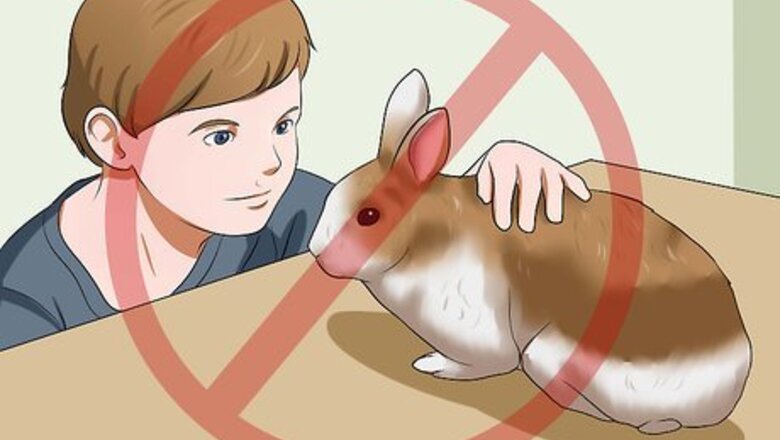
views
Making Sure You Want a Pet Rabbit
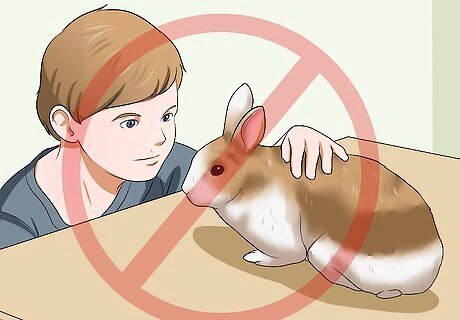
Do not get a child a pet rabbit. Rabbits are delicate and do not do well with children’s style of handling. Unlike dogs or cats, rabbits cannot cry out, and will resort to scratching or nibbling to show displeasure. Because of this, it’s often hard to know if a rabbit is unhappy. Rabbits that are dropped (as children are likely to do) are at great risk for breaking bones, especially their spines. Even though many children love rabbits, they are not a great pet for children.
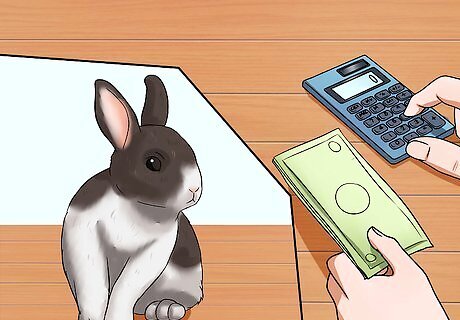
Make sure you can afford it. Like all pets, rabbits are not free. They need food, bedding, trips to the veterinarian, and litter (for training indoors). This means hundreds of dollars a year, and more if your rabbit has health problems.
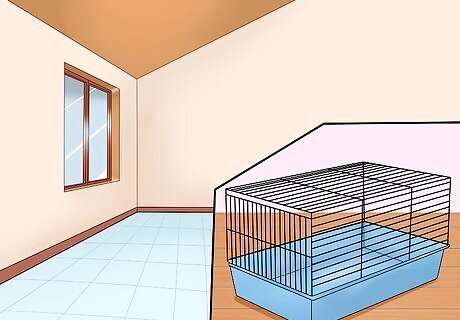
Check if you have space for a rabbit hutch or cage. They should also be kept in their own area -- don’t house two rabbits together unless they are both spayed or neutered and have been shown to be able to get along.

Be sure to have space for your rabbit to play. This area can be outdoors or indoors. Your rabbit needs to run and hop around and play with toys, typically for a few hours per day. Any outdoor area needs to be fenced and you must watch the rabbit at all times so that he or she is not taken by predators or is able to dig under the fence. This should go down at least 2 feet into the ground and 3-4 feet above ground. Indoors, you need a safe rabbit area (much like you would have for a toddler) with all cords hidden and nothing out the rabbit cannot play with.
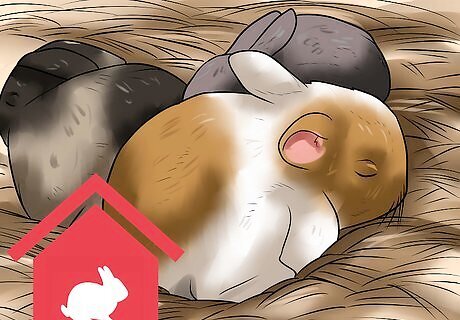
Get a rabbit (if you decide to) from a shelter, if possible. Many people who initially believe a rabbit will be a great pet for them -- often around Easter -- realize that it is more work than they are ready to take on. It’s at this point that many animal shelters have rabbits. Call around to shelters in your area to find out where they might have rabbits available. Often, an animal shelters website will have pictures and links to more info on the rabbits they have.
Caring for Your Rabbit
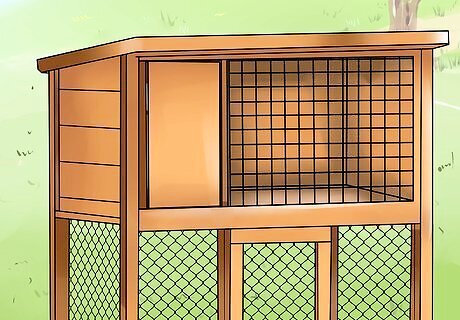
Create a good hutch for your rabbit. You can buy a hutch or build your own. All hutches should be large enough for a litter box, food and water bowls, and room for your bunny to stretch out. The cage should be at least 4 times longer than your rabbit is. If you do decide to make your own, think about making a wire box that can be removed and then a wooden box around it. This makes it easier to clean. For more information, see the website below.
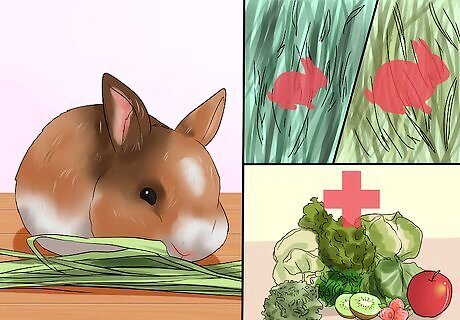
Feed your rabbit appropriate food. The majority of an adult rabbits diet should be Timothy hay. A rabbit should always have unlimited access to hay. Alfalfa hay is not appropriate and can make them sick. Pellet food should also be fed in smaller quantities (about one ounce per pound of the rabbit's weight per day).The rest of it should be primarily leafy greens. For a treat, you can give your rabbit fresh fruit.

Take your rabbit to the veterinarian. Like any pet, regular trips to the vet are a necessity for your bunny. In addition to vaccinations, your veterinarian can help you learn about when your rabbit needs medical care. Unlike other pets, rabbits often hide their illnesses, so it might be hard to know if your rabbit needs attention. Your veterinarian can give you tips on rabbit behavior and what might be of concern. If you live in the UK, get your rabbit annual vaccinations against myxomatosis and viral hemorrhagic disease.
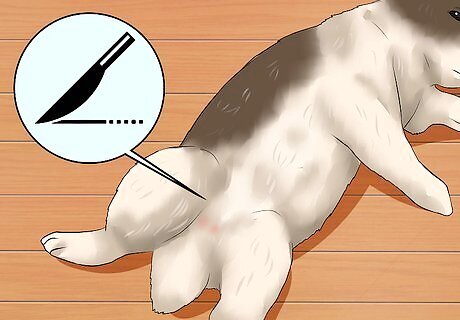
Spay or neuter your rabbit. This will make for a calmer pet. You will also avoid the possibilities of many cancers in female rabbits. For male rabbits, they will benefit from a lack of aggression and an interest for fighting that often happen in non-neutered rabbits.
Making Sure Your Rabbit has a Good Life
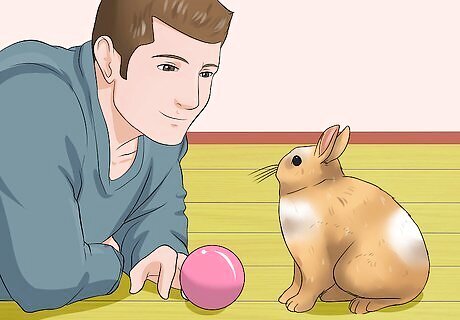
Play with your rabbit. Gentle play with your rabbit daily is essential to a good life. Rabbits love to knock things down, and often enjoy playing a “bowling” type game. They also like to “steal” things from you -- make sure they are taking only things that are rabbit-safe. Some rabbits also enjoy playing fetch.

Make a fun play area for your rabbit. Think about a multi-level structure with open shelving and a fence. These are easy to create from store-bought shelving -- be sure that the holes in any open shelving are not too big for rabbit feet.
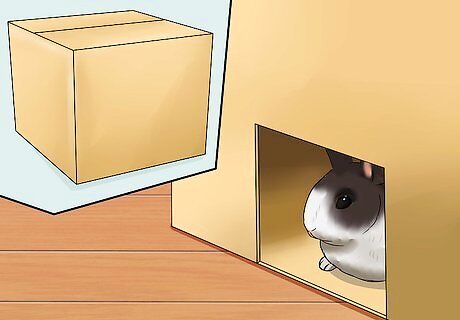
Add a box in the rabbit's play area. Rabbits love to hide and run under things. Find a good sized box that is larger than your rabbit. Cut openings on two of the sides to make a tunnel for him/her to play in.
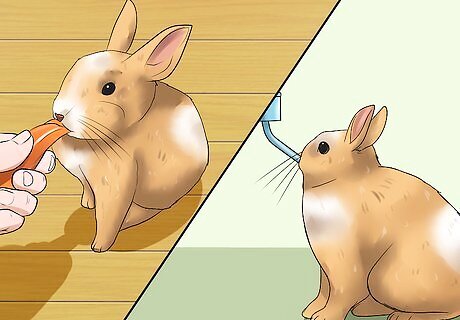
Make sure your rabbit is thriving. Feed him or her a good diet with lots of fiber. Make sure he or she stays healthy -- physically examine your rabbit to make sure there is no unusual discharge, his or her teeth are fine, and to be certain the rabbit is not overweight.
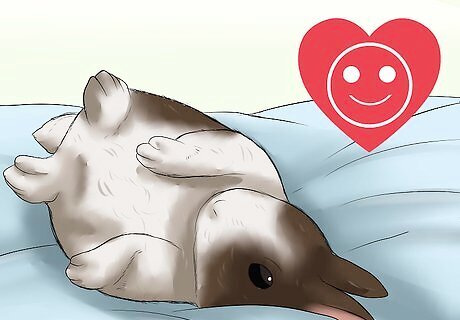
Keep your rabbit happy. With proper care, feeding, and love, you can keep your house rabbit happy. Make sure he or she has clean and appropriate places to sleep, eat, and play. Enjoy your time with your delightful pet!




















Comments
0 comment